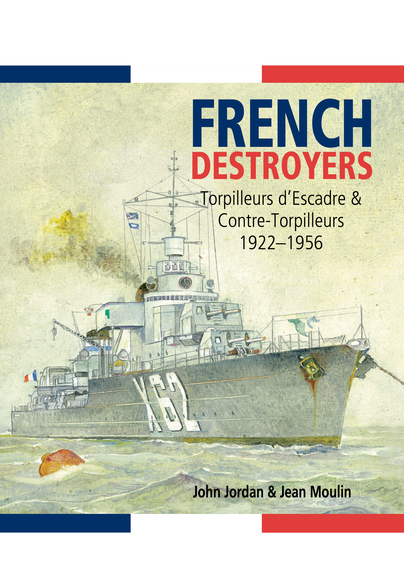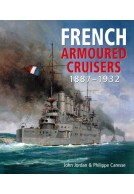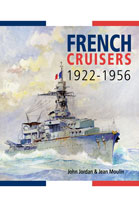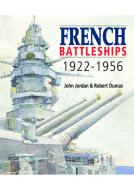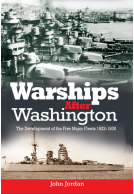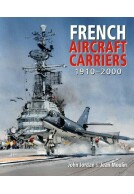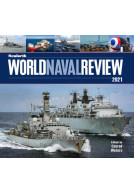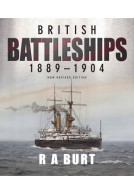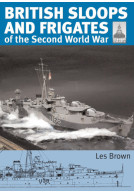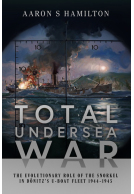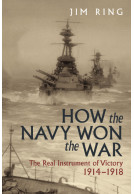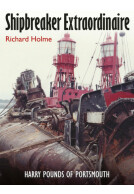French Destroyers (Hardback)
Torpilleurs d'Escadre and Contre-Torpilleurs, 1922–1956
(click here for international delivery rates)
Order within the next 11 hours, 45 minutes to get your order processed the next working day!
Need a currency converter? Check XE.com for live rates
| Other formats available | Price |
|---|---|
| French Destroyers eBook (77.6 MB) Add to Basket | £16.00 |
Between the wars the French produced some of the largest, and certainly the fastest, destroyers in the world. Known as Contre-Torpilleurs, these striking and innovatory super-destroyers form the core of this book, but the more conventional Torpilleurs d'Escadre are also covered. This history combines the technical and service material published in French-language monographs over the past two decades with the authors' own research from primary sources.
The structure of the book follows that of the highly successful French Cruisers, with Part I devoted to the design of each of the classes built after 1922. The text is accompanied by detailed data tables and illustrated by a comprehensive set of specially-drawn plans and schemas based on official documents, as well as carefully-selected photographs from French naval sources and from private collections. Coverage runs down to the Le Hardi class, the last pre-war design..
Part II deals with the historical side, covering the eventful careers of these ships before, during and after the war. This section is illustrated by maps specially drawn for the book, and by contemporary photographs.
Like its highly successful predecessors, French Battleships and French Cruisers, this beautifully presented book blends technical and historical analysis to produce what must become the standard English-language reference work.
As featured in
STORIA militare, November 2015
French warship design and construction has always been of a high standard and the French Navy has long provided a global blue-water naval force equal to the best. It is therefore surprising that remarkably few English-language publications have offered an effective history of key French warship types. This new book provides a thoroughly researched history of French destroyers between 1922 and 1956, beautifully produced with a wealth of images and tables – Highly Recommended.
Firetrench
Read the full review here.
This is likely to be the definitive study of this topic for many years to come, and I can't imagine anyone published a more detailed account in English in the foreseeable future.
History of War Web
French Destroyers more than matches the exemplary standards of technical detail and presentational excellence achieved by the preceding volumes in a series that is inevitably now considered the standard reference work on a fascinating subject.
Warship annual - Conrad Waters
The information in this beautiful edition is of quality and sheer amount. A guaranteed success!
Neptunus, February 2016 - Louis Van Cant
As featured in
Rivista Marittima
This book is the third volume to be translated from French and is ideally suited to anyone interested in the history of the French Navy, particularly modellers.
Escort Newsletter
-A boon to the modelmaker!
John Jordan and Jean Moulin take us through the history of French destroyers from the 1920s until the 1950s. The period represents one of immense highs and lows for France and we see the fluctuations in fortunes and how they impacted on warship development and production in a country with a long naval tradition. If you look at French warships today they have something singularly Gallic about them setting them apart from so many other vessels even in an age when uniformity seems so prevalent. The destroyers of the period covered here have that hint of something aesthetic about them which certainly separates them from what was happening across the English Channel. Designs for super-destroyers, the Contre-Torpilleurs, were innovative and exciting. These ships look fantastic.
War History Online - Mark Barnes
As with all these things I admit to having no in depth technical knowledge of warships. But, I like reading about them and am a huge fan of maritime archive photography and technical drawings. There is more than enough here to keep me entertained. The authors take us through all the classes built in their chosen period and look at camouflage and markings. The remainder of the book looks at the service histories of the destroyer fleet and it all adds up to make a genuinely fascinating and educational package. I love it.
"French Destroyers" has been composed in the same way as its predecessors "French Battleships" and "French Cruisers". The first part of the book consists of technical descriptions of the ships. The design, development, build and technical data are presented in chronological order. That sequence is defined by a time line along which the ships were produced. That illustrates clearly that there is a defined evolution of the French destroyers. John Jordan was largely responsible for this part, assisted by co-author Jean Moulin. The second part of the book contains the operational history of the relevant ships. This history was originally written in French, in four chapters, which were later on translated into English by John Jordan.
Go2War2.nl
The excellent text is being supported by hundreds of photographs in black and white, tables, schemes, maps and graphic work. These drawings are also by John Jordan and most of them were especially made for this issue. As a bonus, the middle eight pages show 17 pictures of paintings by an artist by the name of Jean Bladé. The total issue provides a reference book of encyclopaedic character of great historical class which reads easy and which looks very good. Together with its both predecessors about the cruisers and battle ships "French Destroyers" fills a significant gap in the English library about French warships. Apart from that the book will absolutely be a treasure on the book shelves of collectors, historians, ships modellers and all other devotees of maritime history
Following on from previous titles covering French battleships and cruisers by the same authors, this latest work maintains the excellent coverage and quality of their previous volumes. French Destroyers follows the format adopted earlier with the book being divided into technical and historical sections. The well-researched text provides the context to the strategic, industrial and naval factors which led to the development of two very different series of super destroyers and fleet destroyers.
Marine News
A most useful chapter entitled Paint Schemes and Identification Markings is included between the two main sections of this excellent volume. The historical section is devoted to a clear and well-presented analysis of the actions and battles which involved the ships under consideration and is divided into four chapters covering the periods from 1926-1939, 1939-1943, 1943-1945 and 1945-1956. The chapter devoted to 1939-1943 provides a most informative account of the work of French destroyers in the early part of the war while at the same time showing their trials and tribulations after the fall of France.
This fine work, which is profusely illustrated with photographs, plans, diagrams and maps, is a first example of a contemporary technical naval history. No hesitation in strongly recommending it.
This is an English language 296 page hardback book which is just packed full of the development story, the facts and figures and the history of the French Navy Destroyers from WW1 through to beyond WW2. It follows on from previous books by the same two authors where they have tackled French Battleships and French Cruisers and now they have moved on to tackle the Destroyers, and this includes the differences between the two different classifications given to them...
Military Modelling Online
The book is split into 2 main sections, and after the introduction, which in itself provides a lot of interesting context, the rest is divided between the Technical Section, and this details 9 classes and includes a lot of archive photos along with line drawings of different ships along with detailed drawings of certain specific elements of them and some with hull cross sections and weaponry details. Sprinkled among these are other diagrams explaining tactics and suchlike. The second main element is the Historical Section, which is sub-divided into the periods 1926-1939, then 1939-1943, 1943-1945 and finally 1945-1956. As well as more archive photos these sections also include line drawings of various ships along with plans of various parts as well, used to help illustrate the stories.
In addition to these two main parts of the book there are two other chapters which I would pick out as additional and complementary information. The first is a section of Colour Plates, showing some super artwork, an eight page selection showing some excellent watercolour paintings completed by Surgeon General Jean Blade, who had served as a Medical Officer on board a number of sips, and who had completed these delightful paintings during his time in the French Navy (Marine Nationale). The other chapter which is very much an individual element of the story is Chapter 10 in the book, dividing the Technical from the Historical sections, and this covers the Paint Schemes and Individual Markings that provide the identification features for the various classes and individual vessels.
If you have an interest in the navies of WW2 in particular of course the French Navy, then this is a first class reference on the various Destroyers used by the Marine Nationale and an ideal English language reference book to have on your bookcase.
As seen in...
International Fleet Review
This lavishly illustrated book by well known naval authors John Jordan and Jean Moulin is a heavyweight tome that will be a welcome addition to any naval enthusiasts' bookshelf... The book is replete with excellent photographs, some of which are absolutely stunning black and white images. Each of the photographs has superb and informative captions. Added to this the book has detailed data tables and specially drawn plans and schemes based on official French Government documents... This is a superb book that will keep any reader happy for months as they discover stories and episodes in French naval destroyer design and history.
Warship World - PB
Excellent
Warships
About John Jordan
JOHN JORDAN is the editor of the annual Warship and is best known for a series of technical histories of French warships published by Seaforth. He has also made a particular study of the workings of naval treaties, this book being a sequel to his very popular Warships after Washington.
About Jean Moulin
JEAN MOULIN, his collaborator on this book, is a leading French authority on the ships of the Marine Nationale.







